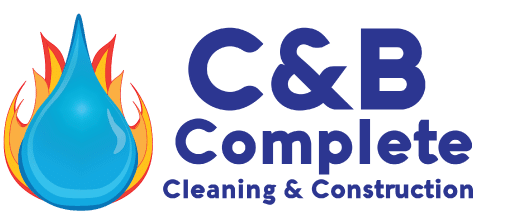Did you know that fires in commercial buildings often start from bad electrical wiring? It’s important to check wiring regularly and follow building codes. Fires can cause a lot of damage, but it’s not always easy to see right away.
Fire damage can look different. It might be big structural damage or just a little smoke and soot. You might see ash, charring, or melting. Smoke can also leave acidic films that change colors and cause corrosion.
Knowing what fire damage looks like is key for cleaning up and making sure places are safe. There are different types of soot, like black from plastics or dry soot from paper and wood. Smoke can also get into tight spots, making cleanup harder. Spotting these signs early can help a lot in fixing things.
Key Takeaways
- Regular maintenance of electrical wiring is crucial to prevent fire risks.
- Fire damage signs include ashing, charring, melting, and material distortion.
- Identifying fire damage involves recognizing smoke and soot residues.
- Smoke damage can infiltrate structures, causing hidden damage and persistent odors.
- Fire affecting protein materials leaves a difficult-to-clean, greasy residue.
- Proper identification of fire damage can significantly aid in restoration efforts.
Signs of Smoke and Soot Damage
Smoke and soot can cause damage far from the fire. It’s important to know the signs of smoke and soot damage. Discoloration on walls and ceilings is a key indicator. Soot can also etch into glass and mirrors, making them cloudy.
Unpleasant odors are another sign of smoke damage. These smells can be hard to get rid of. In kitchens, a greasy film may appear on surfaces. Paper or wood burning can leave a powdery residue.
Dry smoke damage leaves a fine powder that gets into small spaces. Wet smoke damage, from slow-burning fires, creates a thick, sticky residue. This residue settles deeply into surfaces.
Soot damage is easy to spot as a black, powdery substance. Cleaning soot is hard because of its oily nature. Protein residue from burned organic materials is also hard to clean.
Smoke and soot contain harmful chemicals. These can cause respiratory issues and eye irritation. Long-term exposure can lead to serious health problems.
Different materials react differently to smoke damage. Plastics and fiberglass can turn yellow and break down. Soft fabrics stain and develop odors. Wood and metal can deteriorate, risking structural integrity.
Professional smoke damage detection and cleaning are crucial. Restoration teams can save many items. They ensure a thorough cleanup and restoration process.
What does fire damage look like?
Fire damage shows up as charred and blackened areas on buildings. The heat can also damage things like wooden beams and steel frames. This means there’s both visible and hidden damage that needs to be cleaned up.
Inside, wires might get damaged by the heat, which is dangerous. Firefighters use a lot of water to put out fires, causing water damage. This makes cleanup even harder because materials like drywall and wood can absorb water.
Outside, the building’s look can change because of the heat. Windows might break, and walls and roofs can warp. This shows why fixing the building is important to keep it safe.
Smoke damage can go deep into materials, depending on how long the fire burned and how well it was ventilated. Cleaning methods like abrasive blasting help get rid of smoke smells. Techniques like sponge blasting are used to clean different materials safely.
Fixing fire damage is key to making a building safe again. Cleaning up thoroughly helps people feel safe in their homes. It also helps keep the property’s value up. With the right care, fire damage can be lessened, helping people feel like their homes are back to normal.
Conclusion
Understanding fire damage is key to fixing things after a fire. Every year, fires damage many properties in the U.S., causing billions of dollars in losses. Smoke from fires, especially synthetic materials, can be very harmful to health.
It’s important to know how fires affect properties. This includes damage to buildings and health risks. This knowledge helps in fixing things safely and effectively.
A good fire damage review checks the building’s structure and finds smoke and soot. It also looks for water damage from firefighting. The repair process includes inspections, removing harmful materials, drying, cleaning, and rebuilding.
Quick action is vital to prevent more damage. This includes stopping mold growth and avoiding toxic substances like carbon monoxide.
Getting professionals involved in the repair is essential for safety and efficiency. They handle the complex tasks of recovery, like dealing with hazardous residues and making safe repairs. They also reduce health risks from smoke inhalation, like bronchitis and asthma.
Fast and effective repair reduces stress and helps keep everyone safe. Knowing the effects of fire and smoke damage helps owners and teams fix things quickly and safely. This ensures a safer future for everyone.









